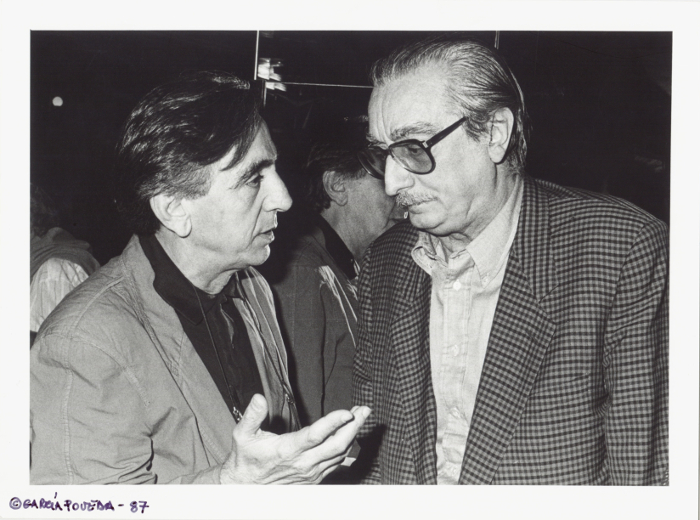
The term essay comes on the one hand from the proximity of the experience (of the moment) and, on the other hand, from an experimental practice which can penetrate into unknown territories without prejudices: “a record of different, changeable events and of indecisive and contrary imaginations”. This compass opening, typical in essays, was aphoristically said by Fuster: “Someone already said it: “It is impossible for an essay to be too short”. Maybe. The perfect essay is the one that only counts with one word. From the word “essay”, for example. Not more”. “A drawing fully covering its base would not be a drawing”, we noticed Walter Benjamin said so. This aspiration for concision, expressive economy and total availability of sense go with the essay of Fuster with the drawing of Alfaro.
“Why did I draw for Fuster? ... He asked me to, he wanted me to draw for him; he probably needed them...” stated Andreu Alfaro in 1992, the year his admired friend Joan Fuster died.
The exhibition gathers more than fifty drawings, sculptures and sketches that Alfaro made for the writer of Sueca. Books, pictures and publications complete the stage in which they talk through writings, articles and collected letters over the years. A meeting produced by a work and graphologies interlaced between both protagonists. Drawing and text that both used independently. If Joan Fuster himself made drawing for any of his books of poems, Alfaro draws in 1959 the anthology of children tales gathered by Fuster and also honours him through different sculptures; the first one in the year 1961 and the most recent at the end of the 90s and the beginning of the 2000. For almost five decades they exchanged ideas and emotions that showed the intensity and irony of the aphorisms, lightness and elegance of the drawn line in a paper or a space; always maintaining the mutual admiration and the unconditional friendship.
Artur Heras




